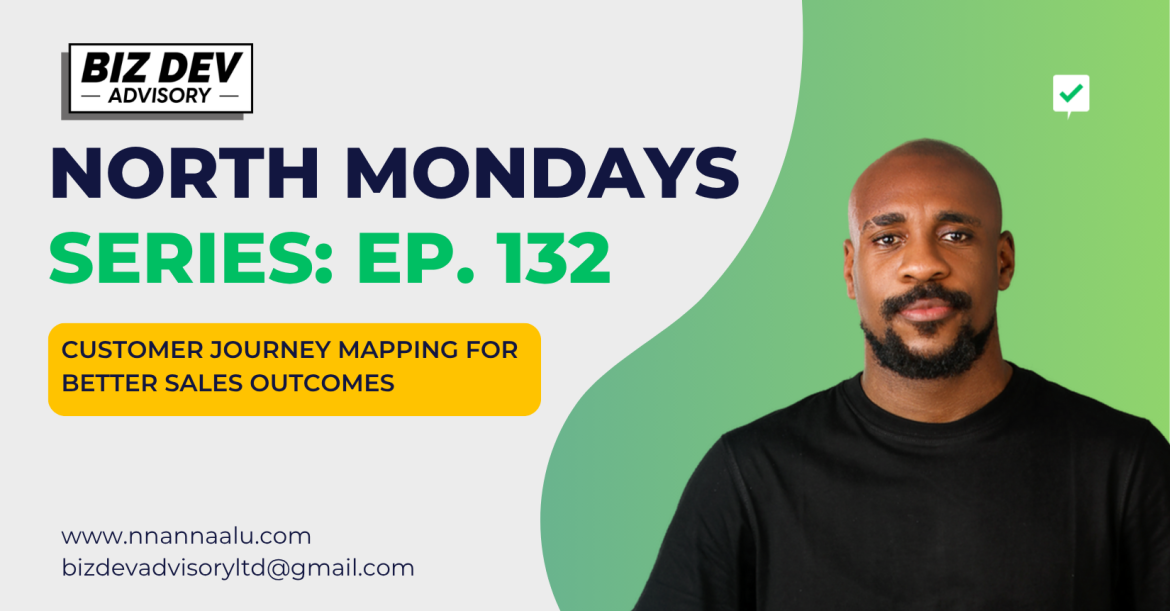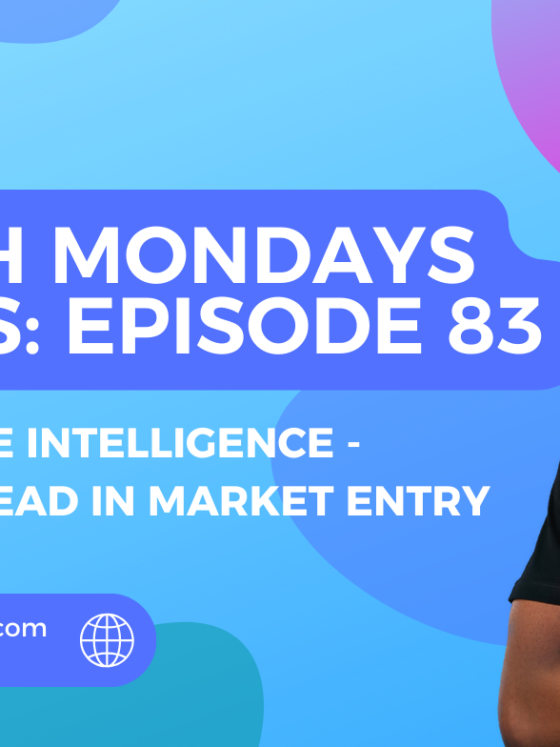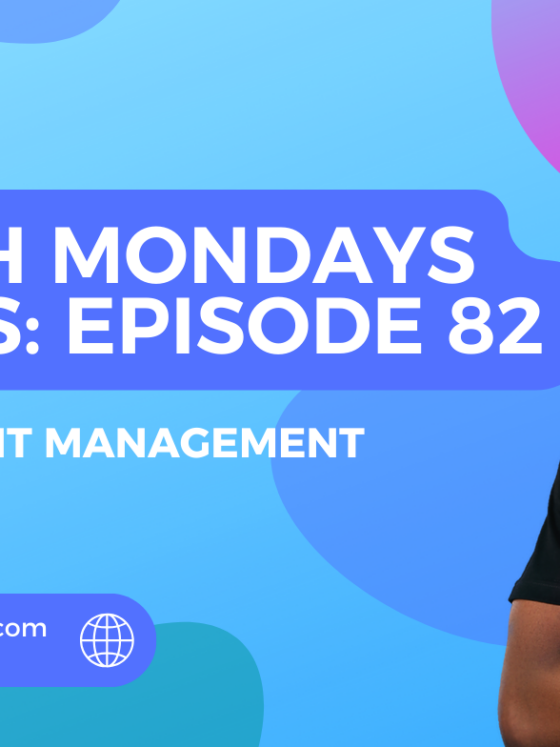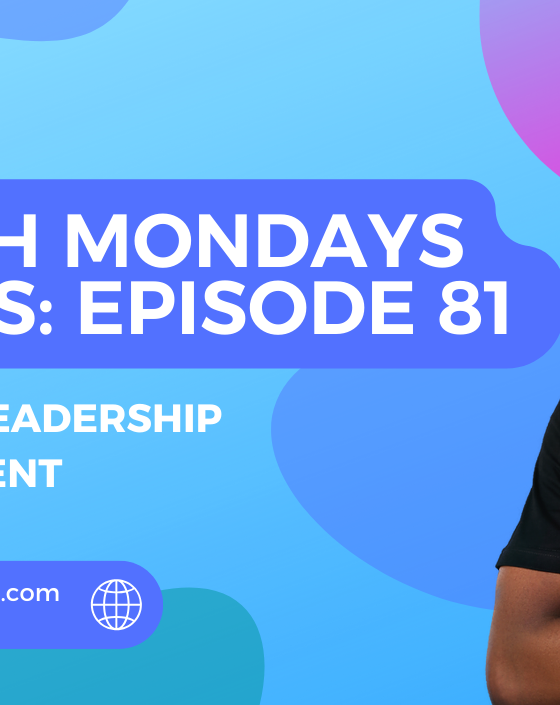Customer Journey Mapping for Better Sales Outcomes
North Mondays Series: Episode 132

If there’s one thing 2025 has made clear, it’s this: your customers are no longer walking down a straight path to purchase. They’re taking detours, pit stops, and sometimes U-turns.
One minute they’re watching your reel, the next they’re reading reviews, abandoning a cart, and popping back two weeks later because an influencer casually mentioned your product. The buying journey has become beautifully chaotic and the businesses thriving through it are the ones paying attention.
That’s where customer journey mapping comes in.
It’s a way to see what your customers actually experience, not what you hope they do.
In a world of endless options and even shorter attention spans, understanding that journey is what turns window shoppersinto buyers and buyers into community members.
Why Customer Journey Mapping Matters
At its core, customer journey mapping is clarity.
It pulls back the curtain on how people find, feel about, and finally choose you.
It helps you:
- Spot friction points that quietly kill conversions.
- Align marketing, sales, and customer service around one shared truth the customer’s reality.
- Craft messages that meet customers exactly where they are.
- Predict needs before they arise.
Think of it as having a front-row seat to the customer’s thought process.
Ask yourself: Are you building your strategy on what you think customers want, or on what they’re actually telling you through their actions?
Mapping Diverse Customer Journeys
Today’s buyers don’t move in neat funnels. They move across multiple touchpoints.
They might discover you on TikTok, compare you on Google, ask about you on WhatsApp, and buy through Instagram DMs.
That fluidity is exciting but messy and that’s where most businesses struggle.
Common challenges include:
- Scattered data across different platforms.
- Different customer personas with unique paths.
- Lack of alignment between marketing, sales, and customer service.
- No clear owner for the journey mapping process.
A returning customer doesn’t need the same nudge as a first-timer. Yet, many businesses send them the same emails, the same ads, the same tone. That’s how you lose attention and trust.
Data-Driven Personalization in Customer Journey Mapping
There’s something you share with your customers and it’s the need to be understood. data-driven personalization is how you give it to them.
Businesses are now blending analytics, AI, and automation to deliver experiences that feel personal, not programmed.
It looks like this:
- Tracking behavior across channels and predicting intent.
- Sending timely, relevant follow-ups based on engagement.
- Adjusting offers and content dynamically as needs evolve.
It’s not about doing more, it’s about doing what matters.
How to Build a Customer Journey Map That Drives Sales
- Define your buyer personas
- Identify who your customers are and what drives their decisions.
- Go beyond demographics—think behaviors, motivations, fears.
- List all customer touchpoints
- Include ads, emails, website visits, social interactions, and support calls.
- Remember: the journey starts before they meet your brand and continues long after the sale.
- Collect and centralize data
- Use CRM and analytics tools to connect the dots across platforms.
- Create one shared view across departments.
- Identify friction points
- Where do customers drop off, hesitate, or complain?
- Fix one pain point at a time.
- Add data-driven personalization
- Automate follow-ups based on behavior (like time spent or actions taken).
- Personalize offers and content based on stage and preferences.
- Test and refine continuously
- Customer behavior changes and your maps should too.
- Review quarterly and invite frontline feedback.
Key Takeaways
- Customer journey mapping helps you understand how customers actually buy.
- The biggest challenge is managing diverse journeys across multiple channels.
- The solution is data-driven personalization; using insights to guide engagement in real time.
- Continuous improvement is essential; the customer journey never stays static.
- When teams align around the journey, sales outcomes improve naturally.
North Mondays Action Plan
- Gather your teams
- Bring sales, marketing, and support together to define a shared customer journey.
- Visualize the stages
- Map Awareness → Consideration → Decision → Retention → Advocacy.
- Collect data for each stage
- Identify what customers do, ask, and feel at every point.
- Spot the gaps
- Find where customers drop off or get frustrated.
- Apply personalization
- Use behavioral data to adjust messaging and offers automatically.
- Review every 90 days
- Update your journey maps as new channels and behaviors appear.
Final Reflection
Every sale starts with a journey and every journey has moments that matter. Customer journey mapping helps you find those moments, improve them, and turn them into opportunities for growth.
With data-driven personalization, you can stop treating customers as segments and start engaging them as individuals.
If you want better sales outcomes in 2025, don’t just sell harder, pay attention.








Recent Comments